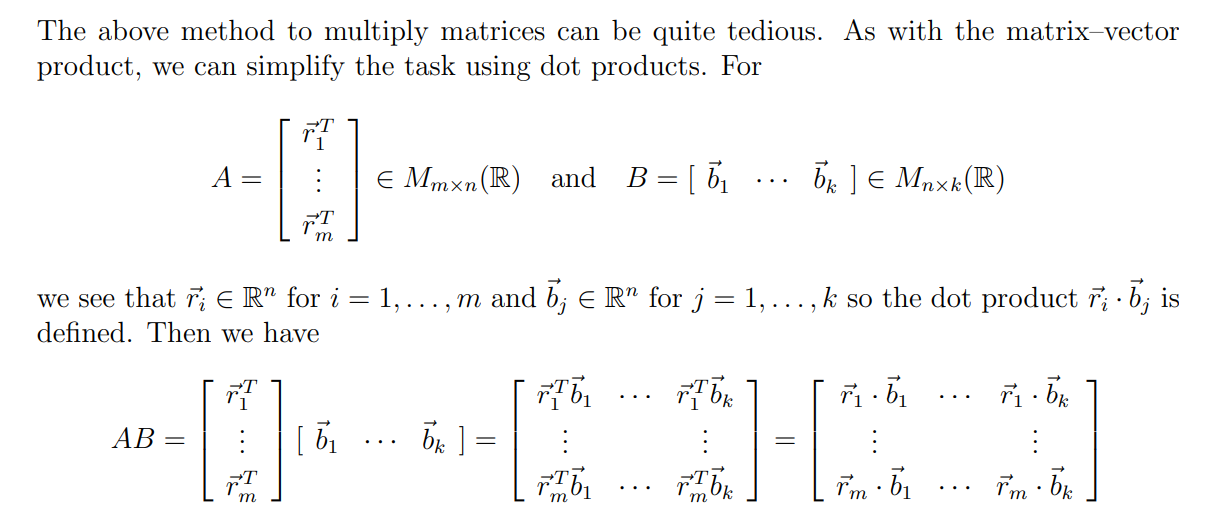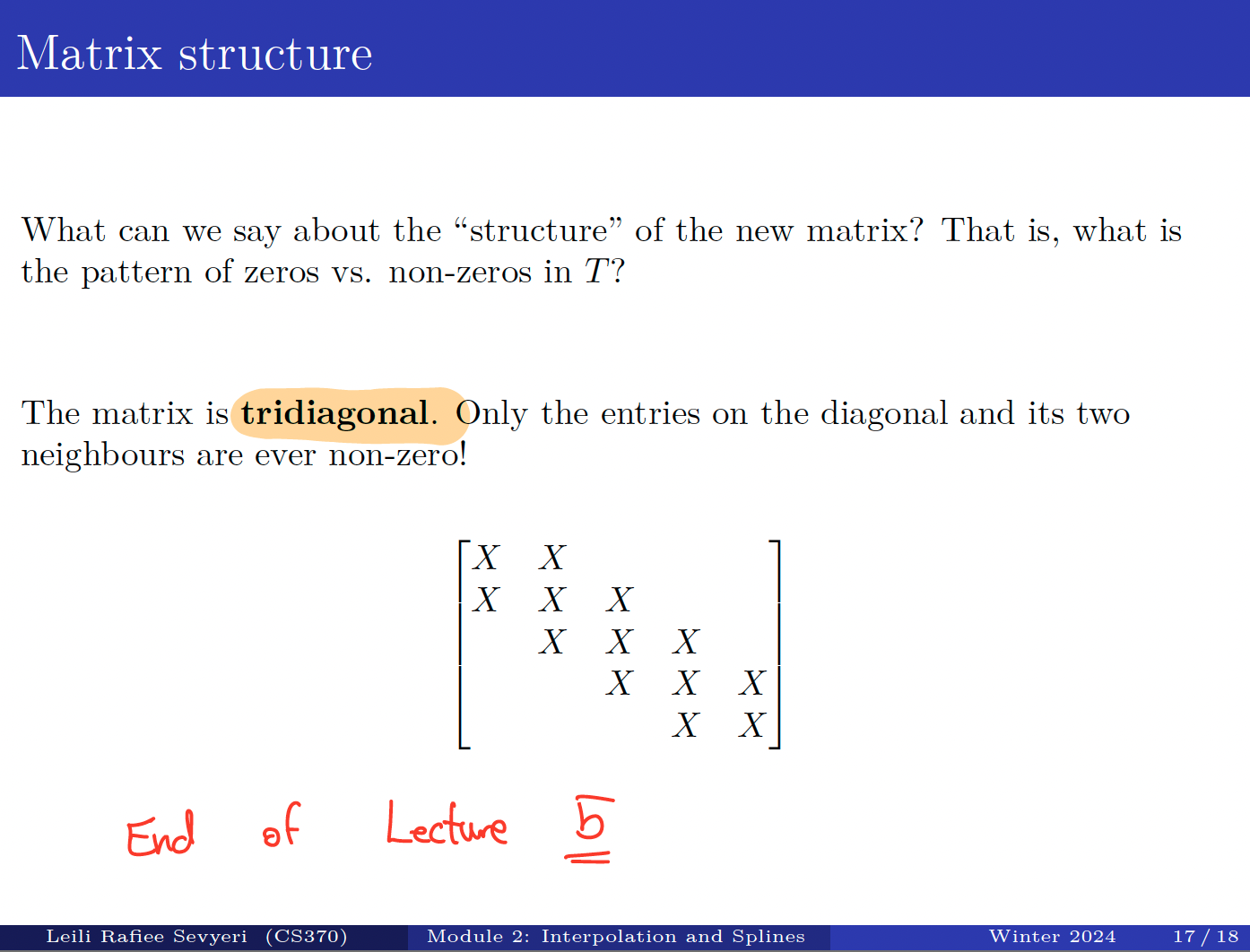Matrix
Super foundational knowledge.
Concepts
- Systems of Linear Equations
- Matrix Multiplication
- Trace of Matrix
- Fundamental Subspaces of a Matrix (Column Space, Row Space, Null space)
- System-Rank Theorem
- Determinant
- Linear Transformation
- Eigenvalues and Eigenvectors
Types of matrix:
Robotics matrices
Matrix Properties
Distributive
Associative
NOT commutative
However, the dot product between two vectors is.
Elementary Row Operations (EROs)
- Swap two rows
- Add a scalar multiple of one row to another
- Multiply any row by a nonzero scalar
We say that two systems are equivalent if they have the same solution set.
Row Echelon Form (REF)
A matrix is in Row Echelon Form (REF) if
- All rows whose entries are all zero appear below all rows that contain nonzero entries,
- Each leading entry is to the right of the leading entries above it.
Reduced Row Echelon Form (RREF)
• A matrix is in Reduced Row Echelon Form (RREF) if it is in REF and (3) Each leading entry is a 1 called a leading one, (4) Each leading one is the only nonzero entry in its column.
Rank
The rank of a matrix A, denoted by rank(A), is the number of leading entries in any REF of A (excluding ).
Super important to understand this
The rank of a matrix tells you how much independent information it contains — or, more precisely:
The rank of a matrix is the maximum number of linearly independent rows or columns.
In systems of equations, transformations, or flow models, rank tells you how many dimensions are actually “active” or “effective”.
Dimension
The dimension is the number of elements in a basis. Definition 22.5. If is a basis for a subspace of , then dim() = . If =, then dim() = 0 since is a basis for .
Matrix Multiplication
IMPORTANT: Matrix multiplication is not commutative.

Matrix Inverse
Definition 30.1. Let . If there exists a such that then is invertible and is an inverse of A (and B is invertible with A an inverse of B).
Unique Inverses
If and are both inverses of , then .
To calculate the matrix inverse, see Determinant.
Properties of matrix inverses. Let be invertible and let with . Then
For all , if , then (left cancellation) For all , if , then (right cancellation)
Diagonal Matrix / Diagonalization
An matrix A is diagonalizable if there exists an invertible matrix and an diagonal matrix so that . In this case, we say that P diagonalizes to .
An matrix A is diagonalizable if and only if for every eigenvalue of A.
Tridiagonal Matrix
Saw this in CS370.

Powers of Matrices
Let be an diagonalizable matrix. Then for some invertible matrix and diagonal matrix . We have than